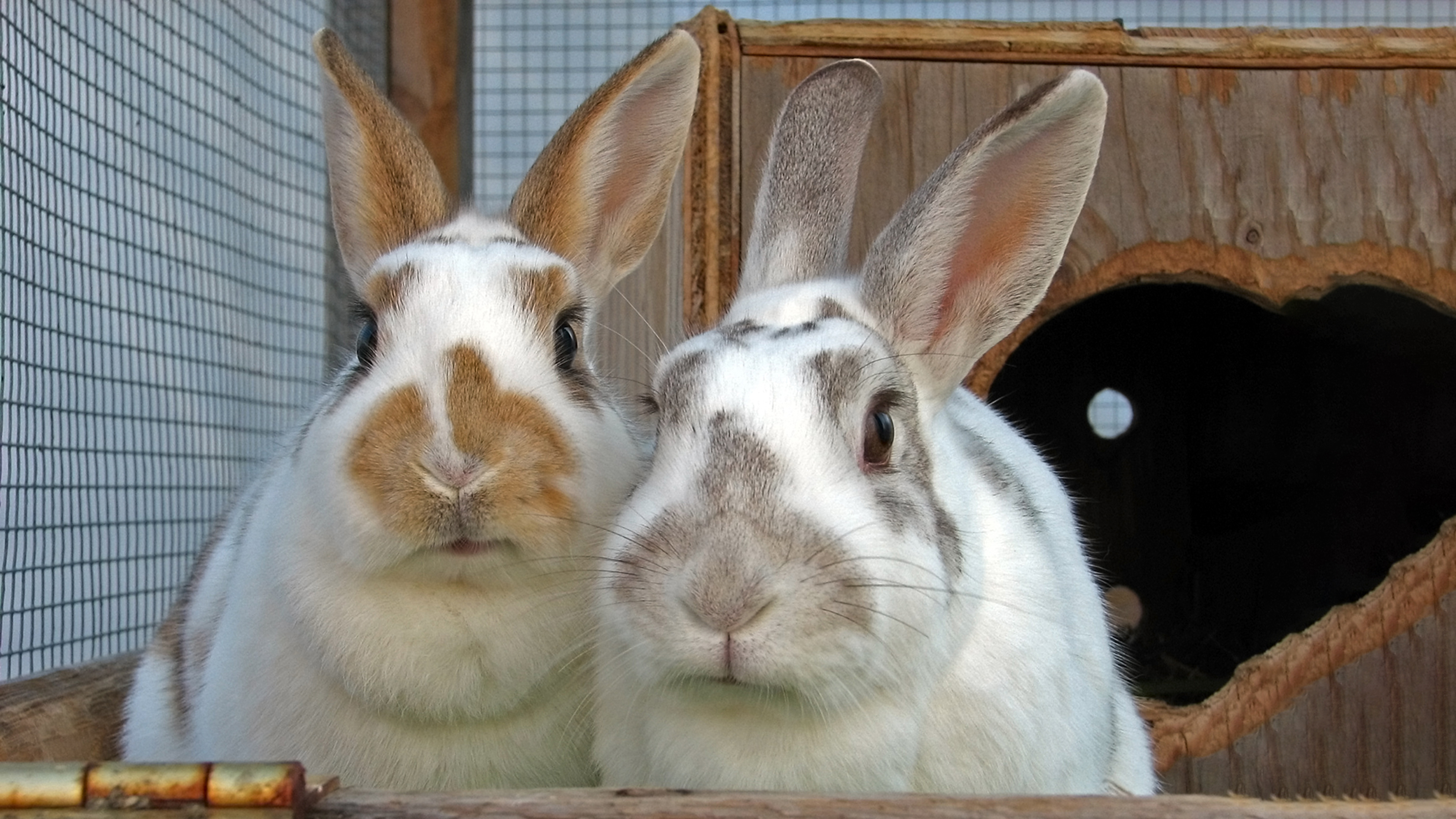
Bringing Your Rabbit Home
Making sure you have everything you need to get your bunnies settled in on their first day is a great way to keep them healthy and happy.
More about bringing your rabbit home
- Electrical wires. Rabbits absolutely love to chew and tug and anything dangling is there to be investigated! This may include electrical wires which can be very dangerous.
- Household toxins. Sadly, some items around the house and garden, including some common household plants, are not good for rabbits. For information on common poisons, click here.
- Heights. Rabbits are better at getting up than getting down, and a tumble can easily result in sprains or broken bones. Make sure your rabbit can't access any heights to keep them safe and on solid ground!
- Chewable objects. We've mentioned electrical wires, but anything chewable can be a target for rabbits, including books and furnishings.
- Breakables. While breaking glass or ceramic can cut or otherwise injure your rabbit, it's also worthwhile thinking about moving anything that might have monetary or emotional value out of reach.
- Furniture. Closing doors, reclining or rocking chairs, and setting up sofa beds are all times when your rabbit can get trapped or injured if they are in the wrong place at the wrong time. Make sure you know where they are before you move anything heavy.
A good rule of thumb is that if it looks like it might be fun to play with or chew on, your new rabbits will give it a go! It is always best to err on the safe side, and thoroughly check your home for anything or anywhere or anything that could be a danger. If you can’t move potential dangers, narrow baby gates can be a great investment to keep your rabbit in safe areas.
There’s lots out there available to buy for rabbits, and with so much on offer, it can be overwhelming. Having a shopping list put together before you start can help narrow down what you need, and here’s one to start you off!
- Food bowl - Heavy food bowls are best as they are less likely to get overturned. Pellets (not muesli) only make up ~2% of your rabbits diet, so don't fill this up!
- Water bottle. Large water bottles are the best way to provide water to rabbits as they don't spill; wet bedding can cause problems, and increase the risk of flystrike.
- Hutch. A hutch should function as a bedroom for rabbits as they are much too small to be a full-time home. This doesn't mean a small hutch is ok, even if it is only for overnight. The Rabbit Welfare Association recommends hutches should be 6ft x 2ft square, and at least 2ft high. This gives rabbits room, at their adult size, to take three hops (often longer than you would think!), stretch out comfortably, and sit up without their ears touching the roof all things we would want from our own bedrooms!
- Hay. Hay should be the main part of your rabbits diet - 70% in fact! Good quality, sweet-smelling hay is important for teeth, digestion and even mental health!
- Hay rack. Rabbits eat a lot of hay, and this needs to be kept clean. A rack or hanging net keeps hay off the floor and stops it getting soiled.
- Run. Rabbits should be allowed ample space to explore and play in the day. For indoor rabbits, this might mean just being let out into their normal space, but for outdoor bunnies or indoor rabbits taking advantage of finer weather and grazing, a run is a great option. This should be at least 8ft long, and contain fun things like tubes to explore!
- Grooming tools. Long-haired rabbits especially will need regular attention for their coat. Although long coats take more care, all rabbits will benefit from the one-on-one bonding time of brushing, and it's also a good opportunity for you to give them a good check over.
- Toys. Interacting with rabbits is great fun, and rabbits love to play. Just make sure any toys are rabbit-safe and appropriate for their size.
- Litterbox. Rabbits are intelligent and can be housetrained! Getting started as early as possible will help make this training easy, and litter box training all rabbits will make keeping their environment and them clean much simpler.
For more information on setting up a home for your rabbits, have a look at our rabbit housing page.
Bringing your rabbits home for the first time is a really exciting time for the whole family, but can be a very scary experience for them. Don’t forget, their whole world has just changed! Making the day as relaxed as possible for them will help them settle in faster, and help prevent any fear or anxiety from developing.
- Make sure you have a safe carrier to bring your rabbits home in and make sure it is lined with something absorbent in case of any little accidents. Have someone in the car who isn't driving, who can reassure your new rabbits and help keep them calm.
- Ask whoever you are getting your rabbit from what they have been eating, what their bedding is and what their favourite toys are. If you can get a sample to bring home, all the better! Anything that feels familiar will help your rabbit settle in at home, and if it smells familiar too that will be even more reassuring.
- While travelling, keep things calm in the car. It can be tempting to get your rabbits out, but letting them settle in their safe carrier is best and safest for the journey. You may want to cover the carrier with a light blanket to keep it dark as this can help calm your rabbits, and if you have any toys or bedding that smells familiar, placing these in the carrier can be soothing.
- When you get home, place your rabbits in their pre-prepared hutch to settle down. Having some normal noise around the hutch is fine it's important that they get used to what will be happening around them on a daily basis but try and keep the environment calm. Keep an eye to see if you can spot them nibbling food and checking out the hutch.
- When your rabbits seem settled, open the door to a secure and rabbit-proof area with you in. Don't rush them! Rabbits are naturally curious and will come out and explore, but will do much better if they are allowed to do this at their own pace. Building your interaction at their speed and rewarding good behaviour, will help build a lifelong bond.
- If you have children, restrict access to your new rabbit at first as playtime can be quite intense! Bonding time is great, but try and keep it to just a handful of short sessions through the day, and keep an eye on both rabbits and children to make sure play is safe for everyone.
If you already have a rabbit, managing their relationship is key to a happy home. Have a look at our dedicated page for how to introduce rabbits to each other, to help you keep the peace!
Taking your new rabbit for a check-up at the vets is always recommended, even if they have had their vaccinations.
You get to meet your vet, and they get to meet both you and your rabbits and give them a thorough medical examination. You can also ask any questions – while Companion Care vets are trained to treat sick animals, they also have heaps of knowledge about keeping animals healthy.
Your vet can give you great advice on:
They are also there if you have any concerns – if you think your rabbit isn’t eating or drinking much, or at all, or if they develop diarrhoea, for example.
If you have a new rabbit, we would love to hear from you. Get in touch with your local Companion Care clinic here!
